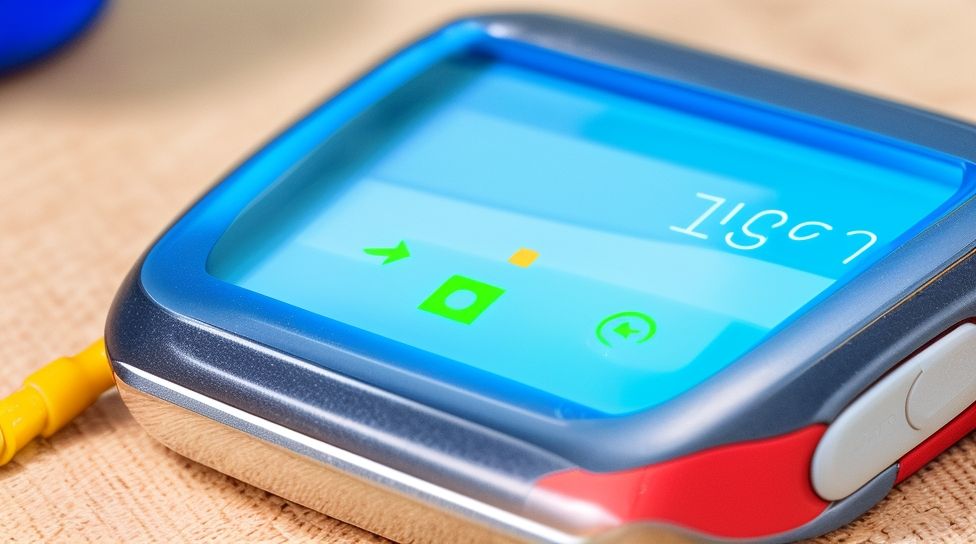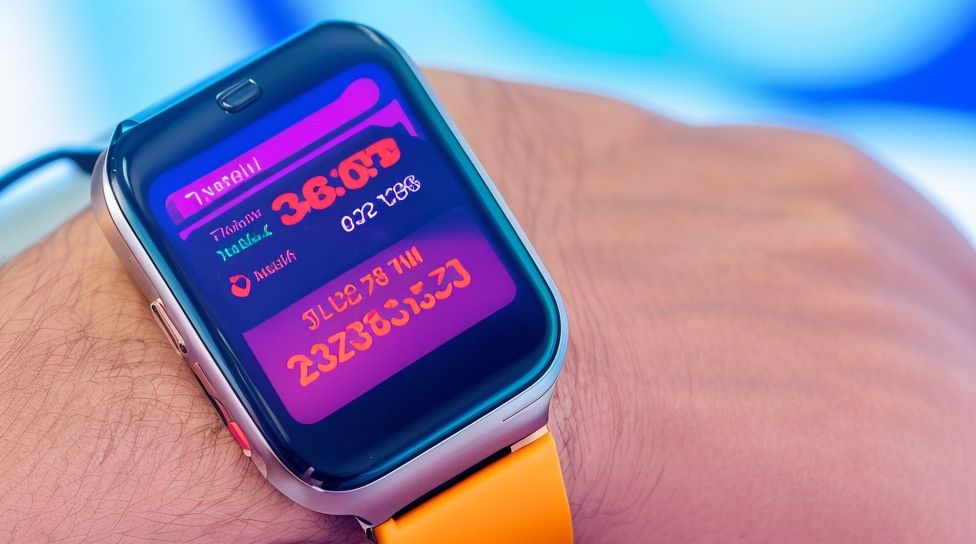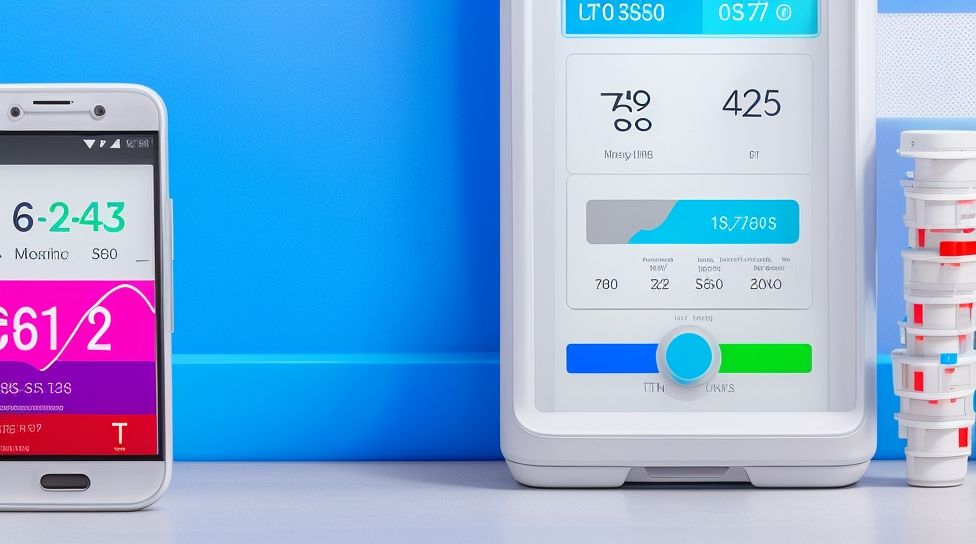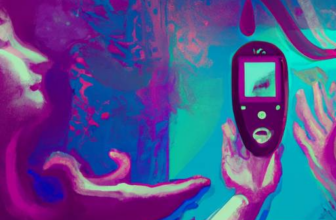Stay Informed: Blood Sugar Monitoring Techniques & Tools for Optimal Health
Blood sugar monitoring is a vital aspect of managing diabetes and maintaining overall health. By regularly monitoring blood sugar levels, individuals with diabetes can make informed decisions about their diet, medication, and lifestyle to keep their condition under control. This article will explore different techniques and tools available for blood sugar monitoring to help individuals stay informed and manage their diabetes effectively.
Understanding the importance of blood sugar monitoring is crucial, as it provides valuable insights into how the body processes glucose. By monitoring blood sugar levels, individuals can identify any fluctuations or abnormalities and take appropriate action to prevent complications.
There are various techniques for blood sugar monitoring, including self-monitoring blood glucose (SMBG), continuous glucose monitoring (CGM), and flash glucose monitoring (FGM). Each technique has its own advantages and considerations, and individuals can choose the one that best suits their needs and preferences.
To facilitate blood sugar monitoring, several tools are available in the market. These include blood glucose meters, continuous glucose monitoring systems, and flash glucose monitoring systems. Each tool has specific features and functions that cater to different monitoring requirements and preferences.
Choosing the right blood sugar monitoring technique and tool requires careful consideration of factors such as convenience, accuracy, affordability, and personal preferences. Understanding the unique considerations for each technique, such as SMBG, CGM, and FGM, can help individuals make an informed decision.
Accurate blood sugar monitoring is essential for effective diabetes management. To ensure accurate readings, individuals need to follow certain tips and guidelines, such as using high-quality testing supplies, properly preparing the testing area, and correctly interpreting the results.
Interpreting blood sugar readings is essential for understanding how well the body is managing glucose levels. By learning how to interpret these readings, individuals can make informed decisions about their diet, medication, and overall diabetes management.
By staying informed about different techniques and tools for blood sugar monitoring, individuals with diabetes can take control of their health and effectively manage their condition for a better quality of life.
Key takeaway:
- Blood sugar monitoring is crucial: Regular monitoring of blood sugar levels is important for managing diabetes and preventing complications.
- Techniques for blood sugar monitoring: Self-monitoring blood glucose, continuous glucose monitoring, and flash glucose monitoring are effective techniques that provide valuable insights into blood sugar levels.
- Tools for blood sugar monitoring: Blood glucose meters, continuous glucose monitoring systems, and flash glucose monitoring systems are tools commonly used for accurate blood sugar monitoring.
Why is Blood Sugar Monitoring Important?

Photo Credits: Diabetescompass.Com by Vincent Campbell
Blood sugar monitoring is crucial for several reasons:
- Diabetes Management: Blood sugar monitoring plays a vital role in managing diabetes. It allows individuals to track their blood glucose levels and make informed decisions about their diet, medication, and lifestyle choices.
- Identification of Patterns: Regular blood sugar monitoring helps identify patterns and trends in glucose levels throughout the day. This information can assist healthcare professionals in adjusting medication, diet, and exercise plans to better manage blood sugar levels.
- Prevention of Complications: Monitoring blood sugar levels helps prevent complications associated with diabetes, such as hyperglycemia (high blood sugar) or hypoglycemia (low blood sugar). By keeping blood sugar levels within the target range, individuals can reduce the risk of long-term complications like nerve damage, kidney disease, and cardiovascular problems.
- Understanding the Impact of Lifestyle Choices: Blood sugar monitoring helps individuals understand how their lifestyle choices, such as diet, exercise, stress levels, and medication adherence, impact their blood sugar levels. This knowledge empowers them to make necessary adjustments and maintain better control over their health.
- Evaluation of Treatment Effectiveness: Regular blood sugar monitoring allows healthcare professionals to evaluate the effectiveness of diabetes treatment plans. By analyzing blood glucose data, they can assess whether medication dosage, insulin therapy, or other interventions need adjustment to achieve desired blood sugar control.
- Early Detection of Issues: Blood sugar monitoring can detect abnormal glucose levels early on, even before symptoms manifest. This early detection enables prompt intervention and reduces the risk of complications.
- Individualized Care: Each person’s response to diabetes management is unique. Blood sugar monitoring helps tailor treatment plans to individual needs, ensuring personalized care and better outcomes.
In summary, blood sugar monitoring is important for managing diabetes, preventing complications, understanding the impact of lifestyle choices, evaluating treatment effectiveness, and detecting issues early. It empowers individuals to take control of their health and work closely with healthcare professionals to optimize diabetes management.
Techniques for Blood Sugar Monitoring

Photo Credits: Diabetescompass.Com by Noah Thomas
Curious about different techniques for monitoring your blood sugar levels? In this section, we’ll uncover the various methods you can use to keep track of your glucose levels. From self-monitoring blood glucose to continuous and flash glucose monitoring, each sub-section will dive into the unique benefits and strategies behind these essential tools. Stay informed and empowered as we explore the world of blood sugar monitoring techniques.
1. Self-Monitoring Blood Glucose
When it comes to managing diabetes, self-monitoring blood glucose (SMBG) is an essential technique. This allows individuals to track their blood sugar levels and make informed decisions regarding their diet, medication, and overall health.
| Benefits of Self-Monitoring Blood Glucose |
|---|
| 1. Immediate feedback on blood glucose levels |
| 2. Identifying patterns and trends in blood sugar fluctuations |
| 3. Assessing the effectiveness of diabetes management strategies |
| 4. Alerting individuals to potential hypoglycemia or hyperglycemia episodes |
| 5. Empowering individuals to make necessary adjustments to their diabetes care plan |
To ensure accurate Self-Monitoring Blood Glucose (SMBG) results, it is important to follow these tips:
- Wash your hands before testing to avoid contamination.
- Use a reliable blood glucose meter that is regularly calibrated.
- Keep track of your testing schedule and make it a routine.
- Alternate testing sites for more accurate results.
- Record your blood glucose readings along with other relevant information, such as time, meals, and medications.
By self-monitoring blood glucose levels, individuals can actively participate in their diabetes management and maintain optimal control. It is important to discuss your Self-Monitoring Blood Glucose (SMBG) results with a healthcare professional to gain insights and make necessary adjustments to your treatment plan.
Remember, accurate blood glucose monitoring is a key component of diabetes management. Stay informed, be consistent with your testing, and take proactive steps towards maintaining good health.
Can’t stand surprises? Continuous glucose monitoring has a catchy name, but it won’t surprise you with unexpected blood sugar spikes.
2. Continuous Glucose Monitoring
Continuous Glucose Monitoring (CGM) is an advanced technique for continuous glucose monitoring (CGM), providing real-time blood sugar data and trends analysis. It involves wearing a small sensor under the skin to measure glucose levels in the interstitial fluid. This sensor continuously sends data to a receiver or smartphone, allowing individuals to track their blood sugar levels in real-time.
CGM offers several advantages over traditional self-monitoring blood glucose (SMBG). Continuous Glucose Monitoring (CGM) provides more data points throughout the day, giving a better understanding of blood sugar fluctuations. It alerts users to hypo- and hyperglycemic episodes, helping them take immediate corrective actions. Continuous Glucose Monitoring (CGM) provides trends and patterns, allowing users and healthcare professionals to make more informed decisions regarding insulin doses and lifestyle modifications.
To effectively utilize Continuous Glucose Monitoring (CGM), individuals must ensure the accuracy of the system by regularly calibrating the sensor with SMBG readings. They should regularly check the sensor site for any signs of infection or irritation. It is also important to note that Continuous Glucose Monitoring (CGM) systems have different features and capabilities, such as customizable alerts and compatibility with insulin pumps. Considering individual preferences and requirements is crucial when selecting the right Continuous Glucose Monitoring (CGM) system.
Continuous Glucose Monitoring (CGM) is a valuable tool for managing diabetes as it provides real-time blood sugar data, alerts for hypo- and hyperglycemia, and trends analysis. It enhances diabetes self-management and empowers individuals to make proactive decisions concerning their health and well-being.
3. Flash Glucose Monitoring
- Flash glucose monitoring is a relatively new technique for monitoring blood sugar levels.
- The system consists of a small sensor that is worn on the back of the upper arm and a reader device.
- The sensor measures glucose levels in the interstitial fluid just below the skin and sends the data to the reader.
- With flash glucose monitoring, there is no need for finger pricks to test blood sugar levels.
One person who benefited greatly from flash glucose monitoring is Sarah, a young woman with type 1 diabetes. Sarah found it difficult to manage her blood sugar levels while juggling work and social activities. Traditional finger pricks were inconvenient and made her feel self-conscious. When she started using flash glucose monitoring, it was a game-changer for her. She could easily check her glucose levels with a quick scan of the reader device. This allowed her to make the necessary adjustments to her insulin doses and manage her blood sugar more effectively. Flash glucose monitoring not only provided Sarah with greater convenience, but it also improved her overall quality of life.
Tools for Blood Sugar Monitoring

Photo Credits: Diabetescompass.Com by Zachary Jackson
Stay ahead in managing your blood sugar levels with the right tools. In this section, we’ll dive into the world of blood sugar monitoring and explore the diverse range of tools available to help you stay informed. From the convenience of blood glucose meters to the continuous tracking capabilities of glucose monitoring systems, and the hassle-free usage of flash glucose monitoring systems, we’ve got you covered. Get ready to discover the tools that can empower you on your journey towards better health.
1. Blood Glucose Meters
The use of blood glucose meters is crucial for individuals with diabetes to monitor their blood sugar levels. When selecting a blood glucose meter, it is important to consider several key aspects:
- Accuracy: Blood glucose meters should provide precise and dependable readings. It is recommended to choose meters that have undergone testing and approval by regulatory authorities to ensure their accuracy.
- User-Friendly: Opt for a meter that is easy to use and comes with clear instructions. It should be simple to handle and require minimal preparation or setup.
- Sample Size: Some meters require a smaller blood sample, which can be beneficial for individuals who struggle to obtain larger amounts of blood or have sensitive fingers.
- Testing Time: The time taken by the meter to display the blood sugar result may vary. Consider the speed of the meter, especially if you value quick results.
- Data Management: Look for meters that have a memory function, allowing you to store and review past blood glucose readings. Additionally, some meters may offer connectivity options to transfer data to a computer or smartphone.
- Cost: Take into account the cost of both the meter and the test strips, as they will be ongoing expenses. Some meters may have more affordable test strips or be compatible with generic brands.
- Support and Accessibility: Check if the manufacturer provides customer support or additional resources such as educational materials or apps that can assist you in effectively managing your diabetes.
By considering these factors, individuals can select a blood glucose meter that caters to their specific needs, enabling them to accurately and effectively monitor their blood sugar levels.
2. Continuous Glucose Monitoring Systems
Continuous Glucose Monitoring Systems (CGMS) are vital for individuals with diabetes to monitor their blood sugar levels continuously throughout the day. These systems play a crucial role in providing real-time data and offering a comprehensive view of glucose fluctuations, enabling better management of diabetes.
In the table below, you will find the key characteristics of CGMS:
| Continuous Glucose Monitoring Systems |
|---|
| Small sensors are inserted under the skin to measure glucose levels. |
| Readings are automatically recorded every 5 minutes. |
| Data can be easily accessed on a receiver or smartphone app. |
| Alarms can be set to notify users of high or low glucose levels. |
| Trend arrows indicate the direction and rate of glucose changes. |
| Users can analyze their data to identify patterns and make informed decisions. |
Incorporating CGMS into a diabetes management routine brings numerous benefits. It enables better glucose control by identifying trends and patterns that may go unnoticed with traditional fingerstick testing. CGMS also reduces the frequency of finger pricks, enhancing convenience and reducing discomfort experienced by users.
If you are considering CGMS, it is important to consult healthcare professionals to determine if it suits your needs. Factors to consider include insurance coverage, device accuracy, ease of use, and compatibility with other diabetes management tools.
Remember, while CGMS is a valuable tool, it should not replace regular healthcare visits and self-management practices. By using continuous glucose monitoring systems alongside other diabetes management strategies, individuals can stay informed and work towards achieving optimal glucose control.
3. Flash Glucose Monitoring Systems
Flash Glucose Monitoring Systems, also known as FGM Systems, enable individuals living with diabetes to continuously monitor their blood sugar levels throughout the day. These systems consist of a small sensor that is worn on the skin and measures glucose levels in the interstitial fluid. By scanning the sensor with a compatible reader or smartphone app, individuals can easily access this information.
The benefits of utilizing Flash Glucose Monitoring Systems are numerous. They provide real-time glucose readings, allowing individuals to make immediate adjustments in their insulin doses or dietary choices. This immediate feedback helps individuals maintain better control of their blood sugar levels, avoiding both hyperglycemia and hypoglycemia. Moreover, FGM Systems eliminate the need for fingerstick blood glucose testing, making monitoring more convenient and less painful.
In addition to immediate feedback, these systems offer valuable insights into glucose patterns, trends, and fluctuations over time. By analyzing this data, individuals can personalize their diabetes management, making informed decisions regarding insulin therapy and lifestyle adjustments. Flash Glucose Monitoring Systems help individuals understand how meals, exercise, and stress impact their blood sugar levels, empowering them to proactively manage their condition.
However, it is important to note that Flash Glucose Monitoring Systems do have some limitations. They are not intended to replace routine blood glucose testing for diagnostic purposes or confirmatory measurements. Instead, they provide supplementary information to guide diabetes management. It is worth mentioning that the accuracy of these systems can be affected by factors such as skin temperature, dehydration, or certain medications.
Overall, Flash Glucose Monitoring Systems offer a convenient and effective way for individuals with diabetes to continuously monitor their blood sugar levels. By providing real-time data and valuable insights, these systems empower individuals to make informed decisions about their diabetes management, leading to better control and improved overall well-being.
Choosing the right blood sugar monitoring technique and tool is crucial, because while needles may be great for sewing, they’re not so great for guessing your glucose levels.
How to Choose the Right Blood Sugar Monitoring Technique and Tool?

Photo Credits: Diabetescompass.Com by Adam Lopez
Choosing the right technique and tool for blood sugar monitoring is crucial for managing your health effectively. In this section, we’ll uncover the key considerations for three different methods: SMBG, CGM, and FGM. We’ll explore the factors you need to weigh when deciding which approach aligns best with your lifestyle and needs. Stay informed and make informed decisions for your blood sugar monitoring journey.
1. Considerations for SMBG
The considerations for self-monitoring blood glucose (SMBG) include:
These considerations for SMBG can assist individuals in effectively managing their blood sugar levels and making informed decisions regarding medication, lifestyle changes, and overall diabetes management.
2. Considerations for CGM
When considering Continuous Glucose Monitoring (CGM), there are important factors to keep in mind. These considerations for CGM will help you choose the right blood sugar monitoring technique:
- Accuracy: One of the main considerations for CGM is accuracy. It is crucial to select a CGM system that provides reliable and precise glucose readings. This is essential for effective management of diabetes.
- Wearability: Another important factor to consider is the comfort and convenience of wearing the CGM system. Look for devices that are lightweight, discreet, and designed for easy application and removal.
- Insertion Process: Evaluate the ease of insertion of the CGM sensor. It’s important to choose a system that suits your preference and comfort level. Some systems may require additional steps or have a more complex insertion process.
- Data Connectivity: Check if the CGM system is compatible with your smartphone, insulin pump, or other devices that you use for diabetes management. Seamless data transfer and availability of real-time information can greatly enhance your monitoring experience.
- Alerts and Notifications: Look for CGM systems that offer customizable alerts and notifications for low and high glucose levels. This feature can help you take prompt action to prevent fluctuations and maintain stable blood sugar levels.
Pro-tip: To determine the most appropriate CGM system for your specific needs and lifestyle, consult with your healthcare provider or diabetes educator. They can provide valuable insights and guidance to help you make an informed decision.
Finding the right blood sugar monitoring technique and tool is crucial, because guessing your levels is not a game you want to win.
3. Considerations for FGM
When considering Flash Glucose Monitoring (FGM), there are several important factors to keep in mind.
1. Accuracy: FGM systems use sensors to measure glucose levels in the interstitial fluid rather than in the blood. While they provide readings that can be a helpful guide, it’s important to understand that these readings may not always be completely accurate compared to traditional blood glucose meters.
2. Sensor Placement: Proper sensor placement is crucial for accurate readings. The manufacturer’s instructions should be followed carefully to ensure the sensor is placed in the correct location on the body.
3. Calibration: Unlike Continuous Glucose Monitoring (CGM), FGM systems do not require calibration with fingerstick measurements. It is still recommended to periodically check blood glucose levels with a blood glucose meter to ensure accuracy.
4. Data Interpretation: FGM systems provide a wealth of data, including glucose trends and patterns. It’s important to understand how to interpret this data and make appropriate adjustments to diabetes management. Consulting with a healthcare professional can be beneficial in understanding and utilizing the information provided by FGM systems.
Before considering FGM as a blood sugar monitoring technique, understand its accuracy limitations, proper sensor placement, the importance of occasional calibration, and the interpretation of the data. By keeping these considerations in mind, individuals can make informed decisions regarding their diabetes management.
Sarah, a diabetic for many years, was looking for a new way to monitor her blood sugar levels. After researching her options, she decided to try FGM. She carefully followed the instructions for sensor placement and regularly checked her blood glucose levels with a meter to ensure accuracy. The FGM system provided her with valuable insights into her glucose patterns and trends, allowing her to make more informed decisions about her diet and medication adjustments. Sarah found that by considering the specific factors associated with FGM, she was able to effectively incorporate it into her diabetes management routine and achieve better overall control of her blood sugar levels.
Tips for Accurate Blood Sugar Monitoring

Photo Credits: Diabetescompass.Com by Alan Garcia
Follow these tips to ensure accurate blood sugar monitoring:
- Wash your hands: Before testing your blood sugar, wash your hands with soap and warm water. This helps remove any substances that could affect the accuracy of the reading.
- Use a clean lancet: Always use a new, sterile lancet for each blood sugar test. Reusing lancets can lead to inaccurate results and increase the risk of infection.
- Alternate test sites: While most people test their blood sugar on their fingertips, consider rotating test sites to minimize discomfort. Ensure you follow your healthcare provider’s instructions for alternate testing areas.
- Calibrate your meter: If you’re using a blood glucose meter, make sure to calibrate it as instructed by the manufacturer. Regular calibration helps maintain the accuracy of your readings.
- Check the expiration date: Ensure that your test strips and other supplies have not expired. Expired test strips may provide inaccurate results.
- Handle test strips properly: Store your test strips in a cool, dry place, away from direct sunlight and extreme temperatures. Avoid touching the test area of the strip, as it may contaminate the sample.
- Follow the instructions: Read and follow the instructions provided with your glucose meter and test strips carefully. Different meters may have specific requirements for use.
- Record your results: Keep a record of your blood sugar readings, along with additional details like the time of day, meals, medications, and any symptoms you experience. This information can help you and your healthcare provider better manage your diabetes.
- Regularly clean your meter: Clean your glucose meter regularly according to the manufacturer’s instructions. This helps prevent contamination and ensures accurate results.
- Discuss with your healthcare provider: If you have any concerns or questions about blood sugar monitoring, consult with your healthcare provider. They can provide personalized guidance and support.
By following these tips, you can ensure more accurate blood sugar monitoring and better manage your diabetes or blood sugar levels.
Interpreting Blood Sugar Readings

Photo Credits: Diabetescompass.Com by Randy Sanchez
When it comes to interpreting blood sugar readings, it is important to understand the following:
- Target Ranges: Different target ranges for blood sugar levels are recommended depending on various factors such as age, overall health, and type of diabetes. It is essential to consult with a healthcare professional to determine the appropriate target range for you.
- Fasting Blood Sugar: Fasting blood sugar refers to the blood glucose level measured after an overnight fast. Normal fasting blood sugar levels typically range between 70 to 100 mg/dL (3.9 to 5.6 mmol/L). Higher levels may indicate prediabetes or diabetes.
- Postprandial Blood Sugar: Postprandial blood sugar refers to the blood glucose level measured after a meal. In individuals without diabetes, blood sugar levels usually rise temporarily and then return to normal within two hours. For people with diabetes, the target postprandial blood sugar level may vary, but it is generally below 180 mg/dL (10 mmol/L).
- HbA1c: HbA1c is a test that measures the average blood sugar level over the past two to three months. It provides a broader picture of blood sugar control. The target HbA1c level for most people with diabetes is below 7%.
- Pattern Management: Monitoring blood sugar levels over time helps identify patterns and trends. By keeping a record of blood sugar readings, individuals can identify high or low blood sugar patterns and take appropriate actions, such as adjusting medication, diet, or exercise routines.
- Impact of Exercise and Food: Physical activity and food intake can significantly affect blood sugar levels. Regular exercise and a balanced diet can help maintain stable blood sugar levels. Monitoring readings before and after exercise or meals can provide insights into how different activities and foods impact blood sugar levels.
- Consultation with Healthcare Professionals: It is essential to consult with healthcare professionals, such as doctors or diabetes educators, to interpret blood sugar readings accurately. They can provide guidance, help analyze patterns, and make necessary adjustments to the treatment plan.
Interpreting blood sugar readings is a crucial step in managing diabetes effectively. By understanding the target ranges, tracking patterns, and seeking guidance from healthcare professionals, individuals can make informed decisions to maintain optimal blood sugar control and overall health.
Some Facts About “Stay Informed: Techniques and Tools for Blood Sugar Monitoring”:
- ✅ Monitoring blood sugar is crucial for individuals with diabetes to assess the effectiveness of their treatment plan. (Source: Our Team)
- ✅ Two primary methods for monitoring blood sugar at home are using a glucose meter and finger stick, or a continuous glucose monitor (CGM). (Source: Our Team)
- ✅ Blood sugar monitoring provides information on food choices, physical activity, insulin dosing, and helps in managing diabetes on a daily basis. (Source: Our Team)
- ✅ Various factors can affect blood sugar levels, such as consuming carbohydrates, missing medication or insulin doses, lack of exercise, stress, and more. (Source: Our Team)
- ✅ Regular blood sugar monitoring is essential to understand fluctuations and make necessary adjustments in diabetes management. (Source: Our Team)
Frequently Asked Questions
How often should I monitor my blood sugar levels?
For individuals with diabetes, monitoring blood sugar levels is essential for managing the condition. It is recommended to monitor blood sugar levels daily, especially if you are taking insulin. By monitoring regularly, you can track changes and make necessary adjustments to your diet, activity, and medication/insulin as needed.
What are the different tools available for blood sugar monitoring?
There are three primary tools for monitoring blood sugar: the A1C test, blood glucose monitor (BGM), and continuous glucose monitoring system (CGM). The A1C test is done every three months and provides an average blood sugar control over the past 2-3 months. BGM involves using a glucose meter and finger stick to measure blood glucose levels on a daily basis. CGM allows for continuous monitoring of blood glucose levels throughout the day.
What is the difference between a glucose meter and a continuous glucose monitor (CGM)?
A glucose meter, used in the blood glucose monitor (BGM) method, measures blood glucose levels at a specific moment. It requires finger sticks several times a day to obtain blood drops for testing. On the other hand, a continuous glucose monitor (CGM) involves wearing a sensor inserted under the skin that continuously measures glucose levels throughout the day. CGM provides real-time data on blood glucose levels, updating every 1 to 15 minutes.
Where can I get the supplies needed for blood sugar monitoring?
To monitor your blood sugar, you will need supplies such as a glucose meter, alcohol pads, finger lancets, and test strips. These supplies are available at local pharmacies, through mail order, or from healthcare providers. It is important to check with your health insurance plan for coverage and specific brand recommendations.
How can I make adjustments in my diabetes management based on blood sugar monitoring?
The results from blood sugar monitoring can be used to make adjustments in various aspects of diabetes management, including diet, physical activity, insulin/medication dosing, and other lifestyle choices. If blood sugar levels are consistently outside the target range, you may need to consult with your healthcare provider to make adjustments to your treatment plan.
What factors can affect blood sugar levels?
Various factors can impact blood sugar levels, including consuming carbohydrates, missing medication or insulin doses, lack of exercise, corticosteroid medications, illness, surgery, stress, dawn phenomenon, smoking, dehydration, and puberty. Conversely, missing meals, taking excess medication or insulin, and physical activity can lower blood sugar levels. Additionally, factors like menstruation, timing of food and medication/insulin, alcohol consumption, and non-diabetes medication interactions can raise or lower blood sugar depending on individual biology.






